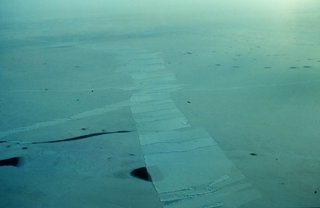Sea Ice Consulting Norway
SICON
Sea ice differs from freshwater ice in its microscopic structure and physical properties. It contains saline brine in pores and fluid inclusions, while lake ice does not. The corresponding porous sea ice microstructure and its salt content are of high importance in many science fields and applications:
- the mechanical properties of sea ice relevant for many engineering applications like traffic-ability and offshore technology in polar regions
- the ecosystem of sea ice linked to biological activity in the pore space
- the dielectric and optical sea ice properties relevant to remote sensing
- atmosphere-ice-ocean interactions and the role of sea ice in polar and global climate
- due to increasing accessibility of polar regions: oil-ice interaction and related environmental pollution issues

On average, 5 to 7 percent of the world oceans are covered by sea ice, and its influence on polar climate is rather fundamental. However, the role of sea ice in the mentioned scientific fields is not fully understood. In particular, there is a need for improved understanding of multiple small-scale and microscale processes that determine how sea ice grows, deforms, drifts and decays. The set of airborne sea ice images below illustrates this challenge. The images have been obtained from flights over Storfjorden, over the course of one week and over a sea ice area of roughly 50 x 100 km². The richness in ice features (ice formation in leads, rafting, ridging, crushed ice fields) indicates the large number of physical processes that are involved on this scale.


















Sea Ice Consulting Norway, Org.-Nr. 913041348, Contact us
More information and illustrations, especially on the microstructure and physical properties of sea ice, will be presented soon on these pages. So far refer to my publications/presentations or a popular science description on the "deep secrets of sea ice" published here.